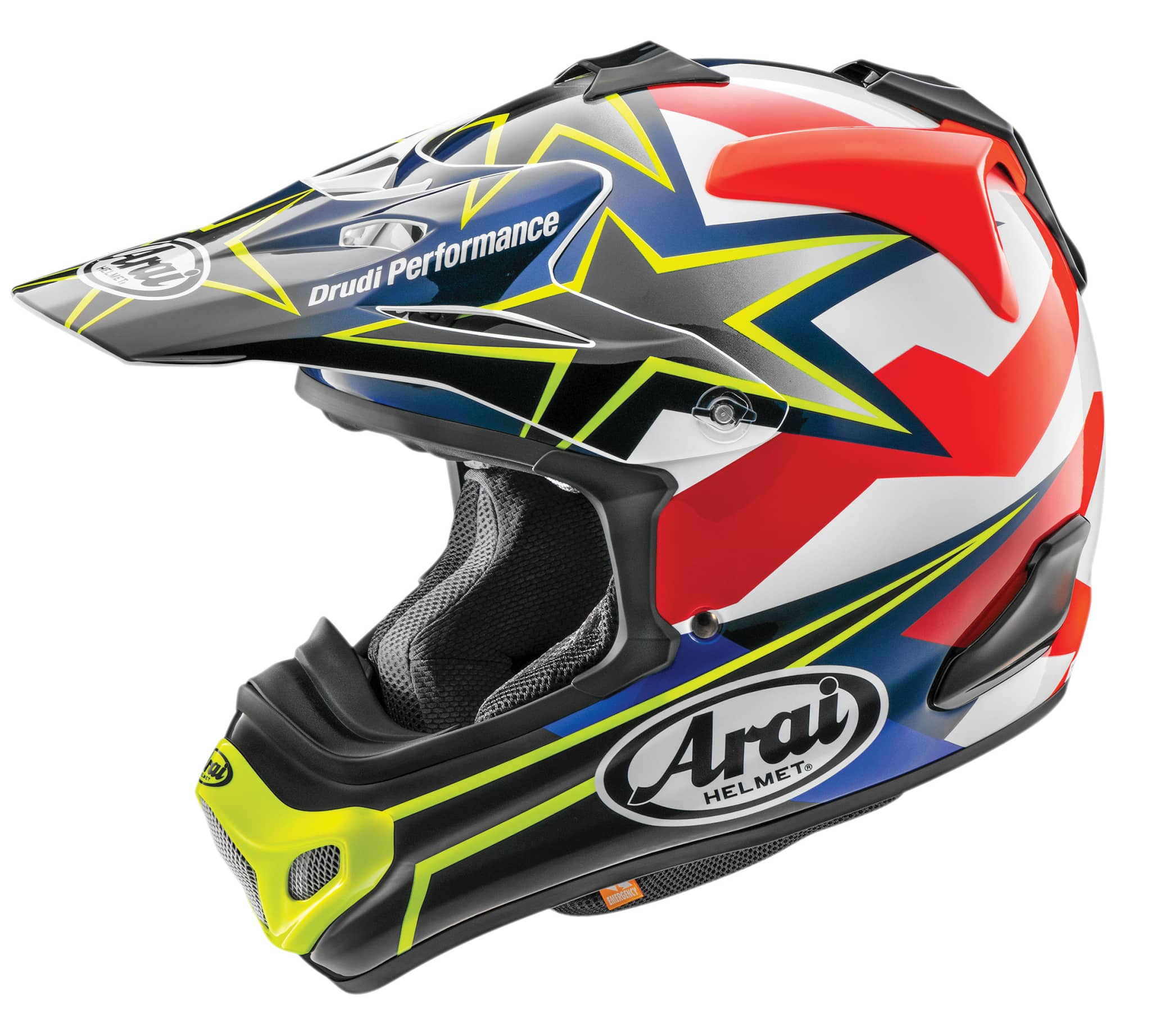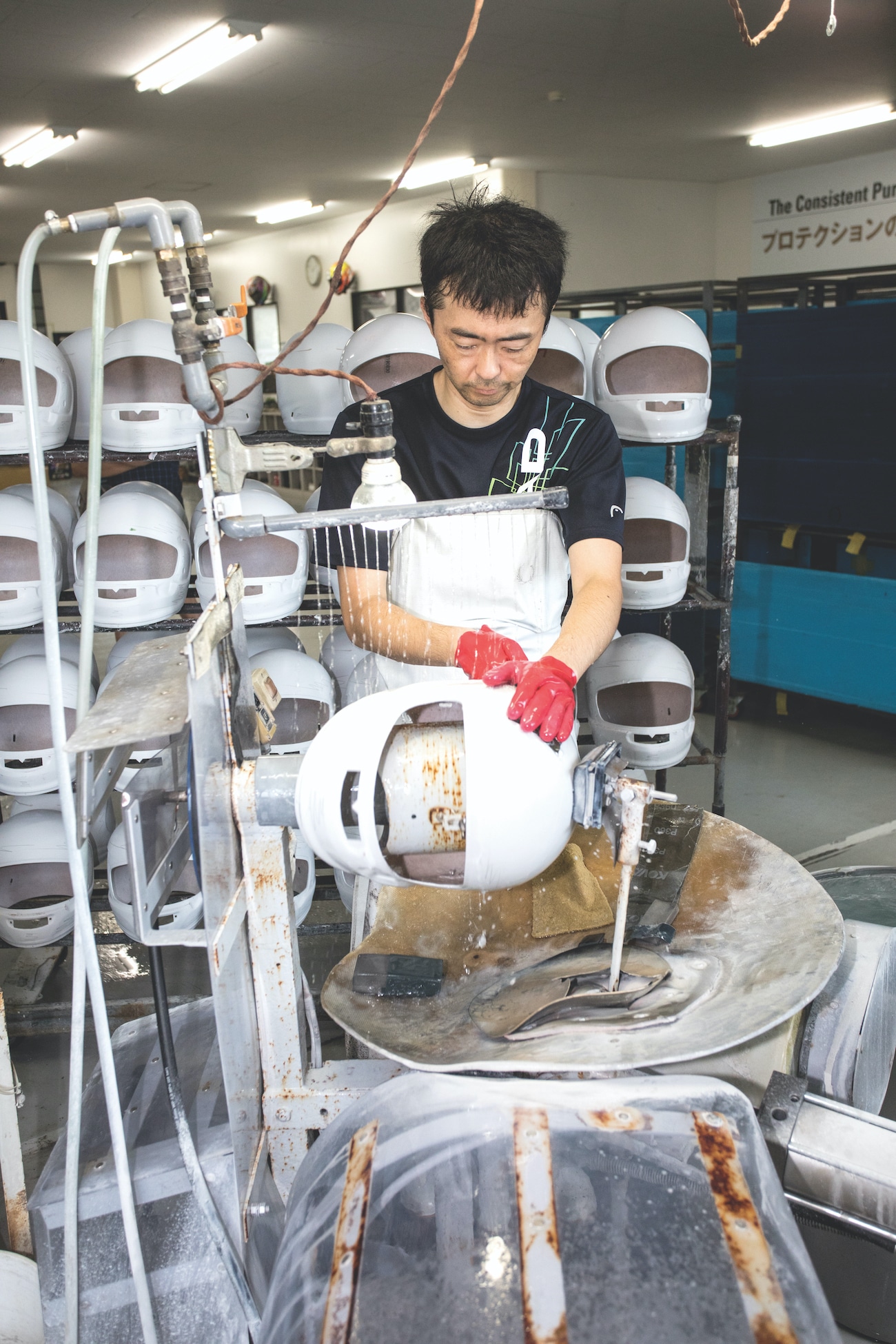TEN THINGS ABOUT ARAI’S R75 HELMET PHILOSOPHY
 (1) Heritage. In the 1950s, there were no helmet manufacturers in Japan, and the country was a closed market, making it difficult to import a proper helmet. Mr. Hirotake Arai wanted better protection for himself and started Arai Helmets to achieve that goal. It has remained a small, family-owned company dedicated to protecting riders.
(1) Heritage. In the 1950s, there were no helmet manufacturers in Japan, and the country was a closed market, making it difficult to import a proper helmet. Mr. Hirotake Arai wanted better protection for himself and started Arai Helmets to achieve that goal. It has remained a small, family-owned company dedicated to protecting riders.
(2) Arai’s philosophy. Helmets are designed to manage the amount of impact energy that transfers to the rider’s head in a crash. Arai focuses on two specific aspects of protection when creating a helmet: its ability to absorb energy internally and deflect it externally. Arai helmets are shaped like an egg with a smooth, round surface. The shape hasn’t changed much over the years, which gives the impression that Arai is behind the eight ball in technology; however, its philosophy of deflecting energy has kept—and will continue to keep—the helmet shape the same.
 Founder Hirotake Arai pushing the envelope.
Founder Hirotake Arai pushing the envelope.
(3) Form. Arai’s concept of “glancing off” is its version of rotational acceleration protection. The idea is that the egg-shaped Arai shell will slide across the ground in a crash, deflecting energy away from the helmet. Arai calls this the “R75 concept,” because it prevents the helmet from hitting the ground and sticking. The continuous 75mm (or more) convex curved radius of the shell reduces the amount of impact that the interior foam has to absorb while lessening whiplash injuries to the neck and brain.
(4) Strength. A strong round shell is more likely to slide in the dirt and deflect energy than to deform and absorb it. Arai uses a unique laminate construction shell with high-quality fiberglass materials, including Specialized glass fiber from bulletproof vests. The fiber is expensive but stronger to maintain strength in high-impact zones. The shell also has a hyper-ridge step at the bottom edge to stop the migration of cracks that form on impact, helping to maintain shell integrity and enhance protection.
(5) Absorption. Arai was among the first helmet manufacturers to use an EPS (expanded polystyrene) liner. Prior to this, helmets had cork liners. Today, Arai uses a one-piece multi-density EPS foam liner that is unlike any other liner on the market. The multi-density design increases strength in high-energy impact zones while maintaining a round and smooth surface.
(6) Single-piece liner. Most helmets have multiple foam liners that fit together, but Arai’s multi-density foam liner is made of one piece. This allows energy to be dispersed over the entire foam liner rather than into segmented pieces of it. This improves energy absorption by giving the energy more area to disperse. Arai developed the single-piece, multi-density liner by putting loose beads of foam together into a mold. Arai’s technique for varying foam density in specific areas of the one-piece liner is a trade secret.
(7) Chin bar. Thanks to Greek mathematician Archimedes, we all know that the longer a lever, the more force it can apply. Tire irons are the perfect example. Arai’s VX-Pro4 motocross helmet features a very short chin bar to limit its leverage when snagging the ground in a crash. When you look at the bottom of the helmet by turning it upside down, you see it’s also shaped like an egg. The chin bar bows outward instead of being straight, which absorbs energy better by encouraging the bar to flex. Additionally, the bow pushes the chin bar outward in a wreck and not inward, which can be more dangerous.
(8) Visor. The Arai VX-Pro4 visor is very pliable and easily bends out of the way in a crash. It’s also held on by plastic screws that sheer away in a wreck. This might seem like a bad thing when you lose a visor, but it’s actually good, because it means the visor will not catch on the ground and twist your helmet.
(9) Extra pieces. Besides the visor, the VX-Pro4 helmet features four plastic vent covers and a chin bar vent grill, all of which are designed to break away in the event of a crash to allow the helmet to deflect and slide instead of catching and digging into the ground.
(10) Durability. The EPS foam is painted black on the inside of the Arai VX-Pro4 helmet. Why? When you crash in an Arai helmet, the paint will separate from the liner and create white lines. These are visual indicators that your helmet’s liner has been compressed. Please note that the liner can still compress in the middle or outside of the EPS foam, and it won’t be visible from the inside of the helmet. If your head hurts after a crash, your helmet has been compromised, and MXA recommends you get a new one. Limbs can be fixed and replaced; your brain can’t.







Comments are closed.